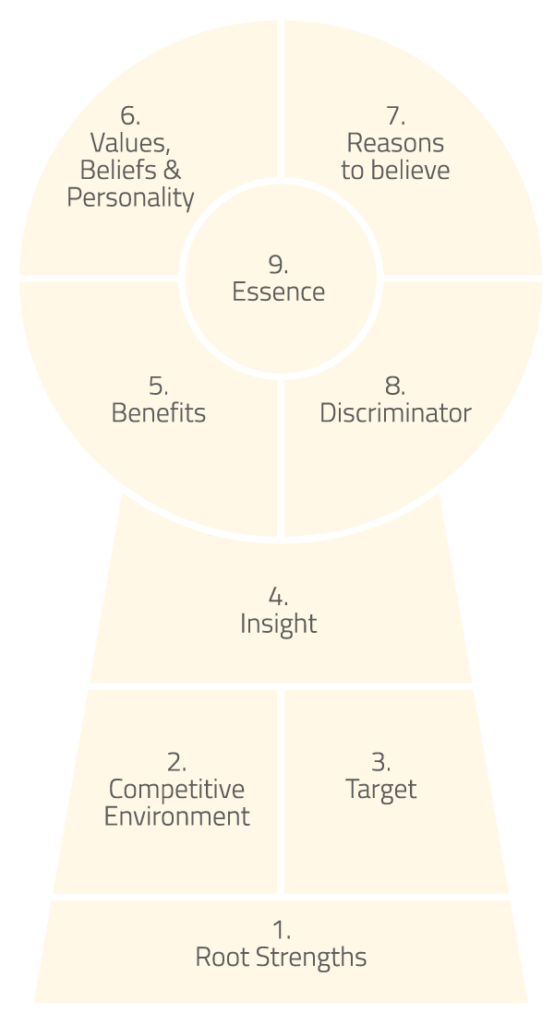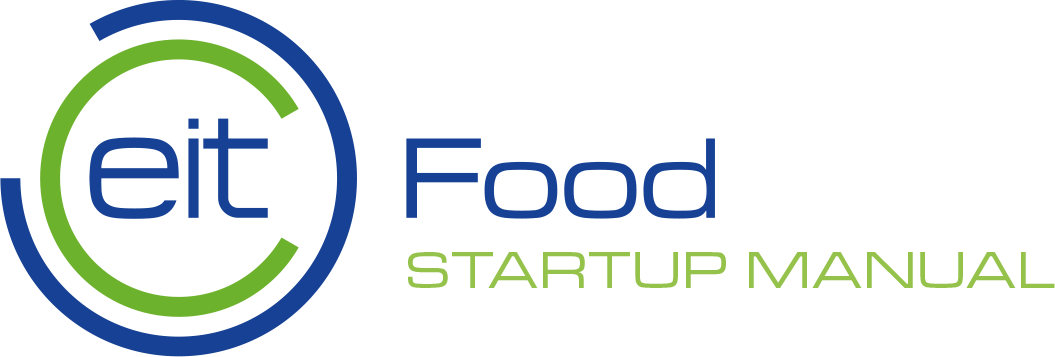Module 7 - Sharing your story
1. Building your brand

“Storytelling is by far the most underrated skill when it comes to business.”
– Gary Vaynerchuck
Telling your story plays a crucial part of your startup journey: it helps you gain the attention of all key stakeholders whether customers, suppliers, or investors. It helps you sell your product or service. People love stories. The better story you tell, the more successful your startup will be. Particularly within the food industry, telling stories is crucial – everyone has an emotional connection to food as everyone eats every day. Building a business in the food industry provides a great opportunity to engage people on issues they’re likely to care about or at least be able to relate to. There are lots of aspects to consider when building and sharing your story. This chapter looks into that from the core tenets of your brand to building a strong marketing strategy.

Your brand reflects what you stand for, whether or not you’re a consumer facing business. Your vision, mission and values are key to how you build your business.
When you’re starting a business, it’s very easy to get distracted by different opportunities and challenges. You may want to grab every exciting opportunity that comes knocking at your door. Or you may feel you need to compromise on certain aspects but aren’t sure how. Having a strong mission and vision early on will act as your compass and help guide strategic business decisions – from what products you produce to who you hire and what kind of culture you’d like to create. Having these two defined also help with engaging your (future) employees and the wider public.
Your vision
This defines your idea for the future, focusing more on long-term aspirations and the wider context of your mission. Watch Simon Sinek’s infamous video, ‘Why great leaders inspire action’. It explains what makes companies exceptional – and it all starts with your ‘why’, before you get to the ‘what’ and ‘how’.
Your mission
A mission statement expresses why your business exists. It states your purpose and lays out the impact you want to have. A company providing technology to reduce water usage on agricultural land could, for example, state its mission as follows: “We exist to increase water efficiency on farms to benefit farming communities in the developing world”. An easy way to start putting together your mission statement is to start with “we exist to….”.

Your values
Similarly to your mission and your vision, your company values matter as they will guide how you build your business and the type of company culture you create (see more on this in chapter 9). Your company values should come from you as founders and what you care about. It’s not always easy expressing these in non-generic terms so have a look at other businesses you admire, many share their values on their website. We love Unreasonable’s company values and how they’re articulated: https://unreasonablegroup.com/manifesto/. You can follow a simple brainstorming exercise with your founder(s)/team to identify your values: Write down your current values/what defines your company culture on post-it notes, then write down what you wish your values & company culture were (your ideal scenario). Have a read through & discuss as a group. You can then decide which ones to prioritise as a team.
Entrepreneur testimonials on having a strong mission & vision
“OLIO’s mission has remained completely unchanged since day 1 and that is to “unlock the value of food that is wasted in the home & local community.” However, how we’re executing against that has continued to evolve as we learn what does and doesn’t work.”
-Tessa Stuart, Co-Founder at Olio


“…We only care about one number and that number is how much food waste we’re preventing…And because of that there is a north star in our business that is unwavering. And the question is always “what will this do to prevent more food waste and solve more and more of the problem”.
-Marc Zornes, Co-Founder at Winnow Solutions
Brand positioning
One of the first steps in developing your brand and marketing strategy is figuring out who you will target specifically (who your target market is) and how you will differentiate yourself from your competitors in doing so. Your brand (or competitive) positioning strategy lays that out. Go back to the market research you conducted to evaluate which customers are within your market segment and who the different competitors are. Once you’ve figured that out, you can decide which target segment(s) you will go after. People respond better to messages targeted at them rather than generic ones so it’s important you have a clear understanding of your brand positioning and develop strategies to exploit it. Companies are generally more likely to be successful if they create a niche rather than try please everybody. To figure out your brand positioning, ask yourself these questions:
- What customer segments* exist within the market we operate in?
- Which of those customer segments is the most likely to respond positively to our offering?
- How is the competition in this market positioning itself (in other words, which customer segments are they going after)?
- How will we differentiate ourselves from the competition, especially if we’re going after the same segments?

*Customer segments are groups of customers based on certain criteria like gender, age, geographic location, interests & preferences, spending habits etc.
With your brand positioning, you want to have a clear idea of the impression or brand perception your customers should have of your brand. You can structure your brand positioning statement in different ways as long as it answers the key points addressed in the questions above, you could also use one of the following templates:
For [insert Target Market], [insert Brand] is the [insert Point of Differentiation] among all [insert Frame of Reference] because [insert Reason to Believe]. (ivyexec.com)
For [your audience], [your brand] is the [your market] that best delivers on [your brand promise] because [your brand], and only [your brand], is [your evidence]. (ivyexec.com)

The brand key, sometimes known as the “Unilever” brand key, is a useful framework to develop your brand and brand positioning, which will in turn inform your marketing strategy (the next part of this chapter).
It contains 9 steps.

Brand key exercise
- Root strengths – The basic strengths and values you want your brand to be known for and on what you want to build on
- Competitive environment – The alternatives to your brand. Take both direct and indirect competition into account and list all the other brands and products/services that the customer might consider when making a purchase decision. What is the value you offer compared to competition?
- Target – Your target customer. The target customers shouldn’t be defined solely based on demographics, but their attitudes, values and interests should be described, too. To whom will your brand be the first choice?
- Insight – What do you know about the customer? Insights about the target market and description of customer wants and needs. What can your brand do to satisfy those wants and needs?
- Benefits – How can the consumer benefit from your brand? How does the brand solve consumers’ problems or improve their lives? Benefits can be functional, emotional and self-expressive.
- Values, Beliefs &, Personality – What does the brand believe in and stand for? What kind of personality does the brand have? How does it behave?
- Reasons to Believe – Proof of why the brand is better than all the alternatives. Come up with an argument that describes why customers would choose your brand over all the other brands.
- Discriminator – What sets you apart from the competition? What is the single most compelling reason for consumers to pick your brand over competition? Describe in one sentence your competitive edge.
- Essence – What is the brand all about? Describe the essence of the brand very briefly in a couple of words. Essence lies at the heart of the brand guiding all of its actions.
Top tip from entrepreneurs of building your brand
“Be unique, daring, totally transparent and true.”
-Jim Cregan, Co-Founder at Jimmy’s Iced Coffee


“Killer brands are the ones that do things differently, that don’t just follow the crowd. The ones that truly pave their own way.”
-Lucy Wright, Co-Founder at Nice
Brand tone of voice & personality
Figuring out your brand personality and the tone you will use in communication is important since it will help you form connections and build relationships with your audience. Tone of voice humanises the brand and gives it a personality, which reminds the audience that there are real people behind it. A defined tone of voice also helps strengthen the values you want to portray and build a desired brand image. In a study of more than 7000 consumers, 64% of participants cited shared values as the primary reason for having a brand relationship (Harvard Business Review, 2012). So, the importance of being able to convey your values shouldn’t be overlooked. No matter whether you are in B2C or B2B, when it comes down to it, people buy from people – from people they relate to and like, to be more exact.
Here are some exercises to help you do that:
- If your brand was a person, who would they be? What are their values? Define the human characteristics and think about how your customers will relate to your brand. How can you build a real relationship with your audience?
- Define what you’re not. Be clear about what you’re not and what communication styles aren’t aligned with the brand image you want to create. What DON’T you want to be described as? If you try to be everything for everyone, the chances are you end up being nothing to no one.
- 5 words that define you. First, think about what’s in the core of your brand, your values, what kind of reputation you want to build and who you are trying to reach with your content. Then, come up with a few words that describe your brand personality.
Developing your brand with an agency – yay or nay?
Depending on your budget and the type of business you’re building, you may want to work with a branding agency or freelancers to build your brand. Unless you’re a designer yourself, it’s likely you’ll at least have to work with someone to create your basic visual identity (logo, fonts, colour scheme etc.). If you’re building a consumer-facing food brand, it’s also likely that at some stage you’ll need to engage the services of a branding agency. However, this doesn’t need to happen from day 1 if you don’t have the budget. Brands can and do evolve. Look at some recent brands and you’ll see many of them went through rebranding exercises as they grew and got more investment. It’s also worth spending a bit of time figuring out what you want your brand to be and represent before hiring their services.

